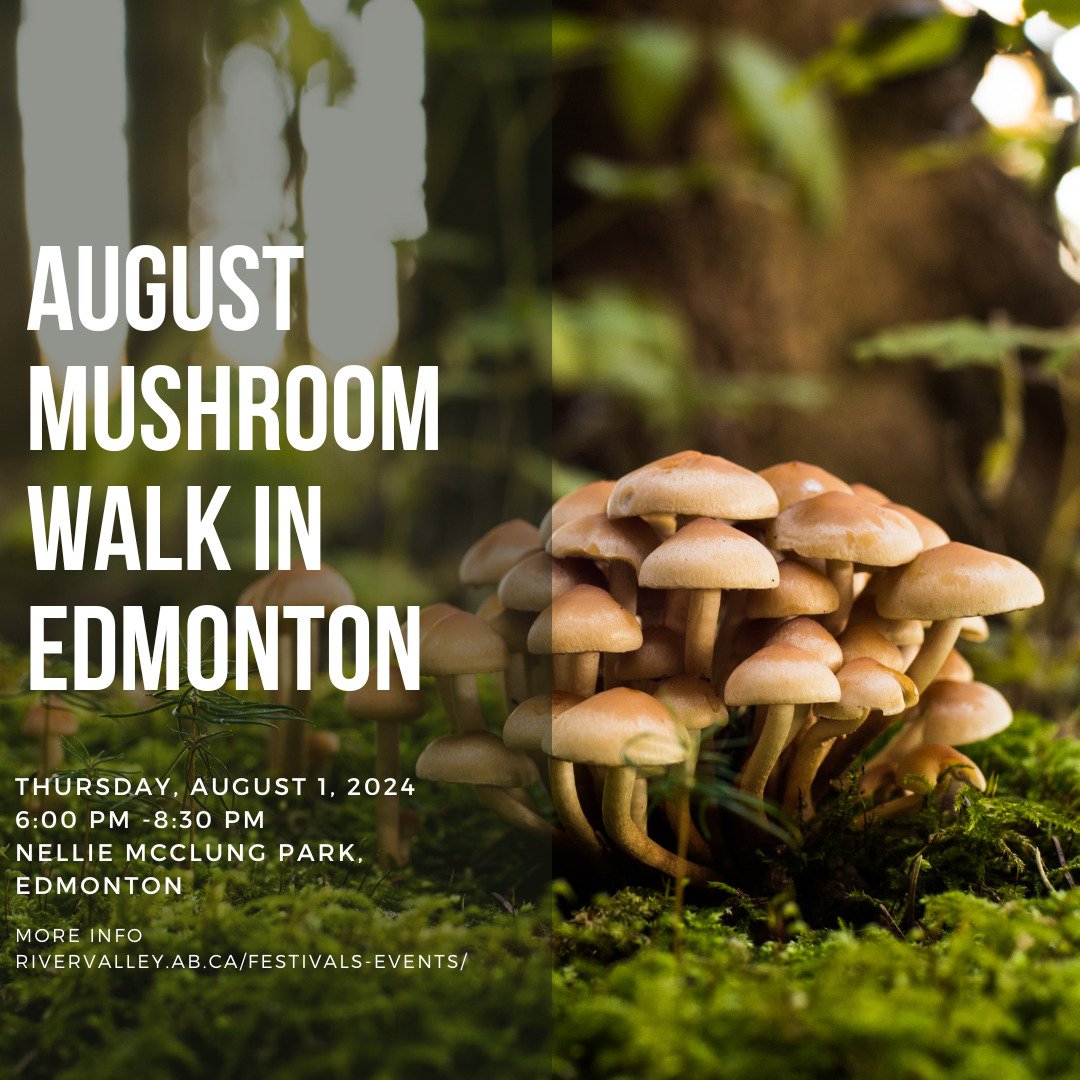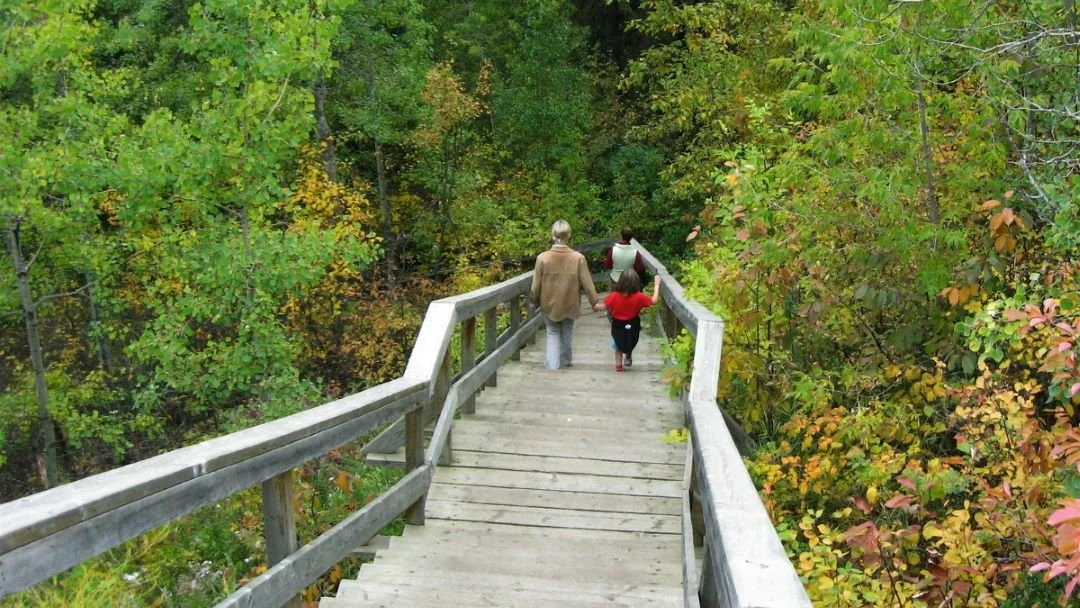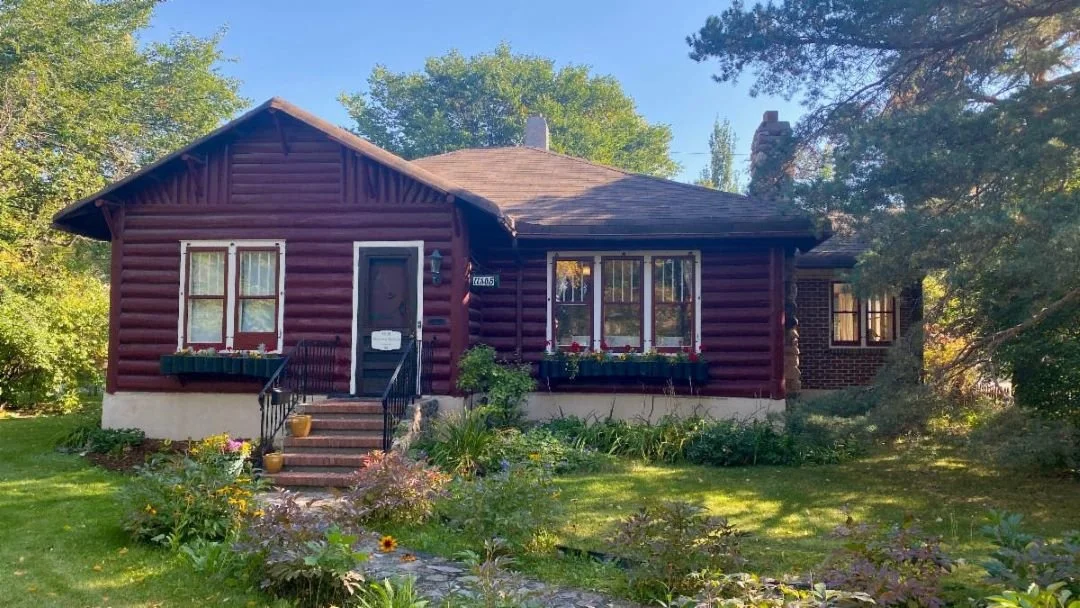Blackmud Creek photo on a control box in SW Edmonton
Miranda Jimmy’s work is one of 12 winning entries in the City of Edmonton’s Vibrant Streets Art Contest, to add vibrancy, colour and character to local intersections. Edmontonians voted on these designs, and the winners’ artwork was installed in each of Edmonton’s 12 wards. Jimmy’s photo is located at Ellerslie Road & 103A Street.
During the pandemic, Miranda Jimmy started exploring the city’s green spaces. Her winning entry is a photo of Blackmud Creek in southwest Edmonton. “I took full advantage of that time to just be alone in nature and to think more about placemaking and how you make the environment your space,” she says.
“I started taking pictures and connecting with the green spaces in my neighborhood in different ways. You start to see the ebbs and flows of the seasons and how human interaction impacts the natural world.” Jimmy, who is a member of the Thunderbird First Nation, hopes her photo will encourage people to consider their relationship to the city and its naturalized places.
“If this is the place you call home and the place that you live and breathe and play in, how are you connected to it?” https://transforming.edmonton.ca/art-contest-adds-joy-and-colour-to-city-streets/
Collaborative algal bloom monitoring
The Alberta Biodiversity Monitoring Institute is one of 11 organizations collaborating, over the next few years, to better understand where, when, and why algal blooms occur in Alberta.
For the second summer in a row, lake water samples will be collected at six lakes across Alberta at the same time the Sentinel-2 satellite flies directly overhead collecting imagery. The satellite imagery is used to estimate chlorophyll-a concentrations, a green pigment found in algae.
The water samples are analyzed at the University of Alberta to identify types and concentrations of algae or cyanobacteria present, and to test water quality. By combining this data, researchers can develop models of current and historical blooms, and eventually predict future blooms.
In 2025, ABMI plans to launch a free online app allowing anyone to visualize and track blooms on their lakes of interest in near real time, and to look at historical blooms. http://blog.abmi.ca/2023/06/29/monitoring-blue-green-algae-blooms-in-alberta-from-space/?
Saskatoon berry one of our best loved native species
Patsy Cotterill photo
A shrub of variable height in the rose family, Rosaceae, saskatoon is probably one of the best-known and loved native species in the prairie provinces. It can occur as a single, well-formed bush or as thickets. It ranges from 1 to 6 m in height and is often shorter in grassland where it may form low thickets, than in open woods where the surrounding vegetation is taller.
Saskatoon does not seem to be widely planted in gardens, although it can make a good accent shrub. Its flowers are a sign of spring, albeit ephemeral, and its fruit is more spontaneously edible than chokecherries. It is grown as a commercial crop and is widely planted in restorations; it is available in nurseries, sometimes as cultivars.
A good place to see this plant is along the banks of the creeks and the river in Edmonton’s North Saskatchewan River valley where it often grows with chokecherry. You will sometimes see ugly clumps of dead, black curled leaves within the bush. This is caused by a fungus disease, blackleaf or witches’ broom, which usually is not lethal unless the crown is infected. https://www.enps.ca/post/plant-profile-saskatoon-amelanchier-alnifolia
Mushroom Walk and Pioneer Cabin Tour
Step back in time at the Pioneer Cabin and immerse yourself in its rich history. After exploring the cabin, embark on a trek along the river valley trail, where you’ll learn about the diverse mushrooms that were essential to both settlers and indigenous peoples. This journey is not just a walk in nature, but a deep dive into the fascinating world of fungi.
Martin Osis’ passion for wild mushrooms is contagious, he loves to explore them with all his senses and shares his extensive knowledge with an infectious enthusiasm. For decades, he has been a beloved educator and entertainer, captivating audiences with his talks, forays, workshops, and identification courses.
Though an amateur mycologist, Martin is recognized as one of Alberta’s leading experts in mushroom field identification. He stays at the forefront of mycological science, constantly studying new research and exploring Alberta’s diverse habitats. His particular interest in medicinal mushrooms is driven by a commitment to natural health, and he is actively involved in several mushroom-related initiatives.
Whether you’re a seasoned mushroom enthusiast or a curious beginner, this event promises to be educational and inspiring. Don’t miss this opportunity to learn from one of the best in the field. The event is hosted by River Valley Alliance and will be begin at 6:00pm on Thursday, August 1 at the Pioneer cabin. Tickets are $10. Reserve your spot at https://rivervalley.ab.ca/events/guided-mushroom-walk-and-pioneer-cabin-tour-in-edmonton/
YEG river valley walk, Robert Priebe photo
Comment or Contributions
Please note articles may not reflect the position of NSRVCS. River Valley News is meant to be a clearinghouse for the variety of opinions and ideas about Edmonton’s River Valley.
Email river valley photos, event information, comments, or questions to nsrivervalley@gmail.com
Forward this link to anyone you think may want to sign up for this newsletter https://www.edmontonrivervalley.org/newsletter-signup















